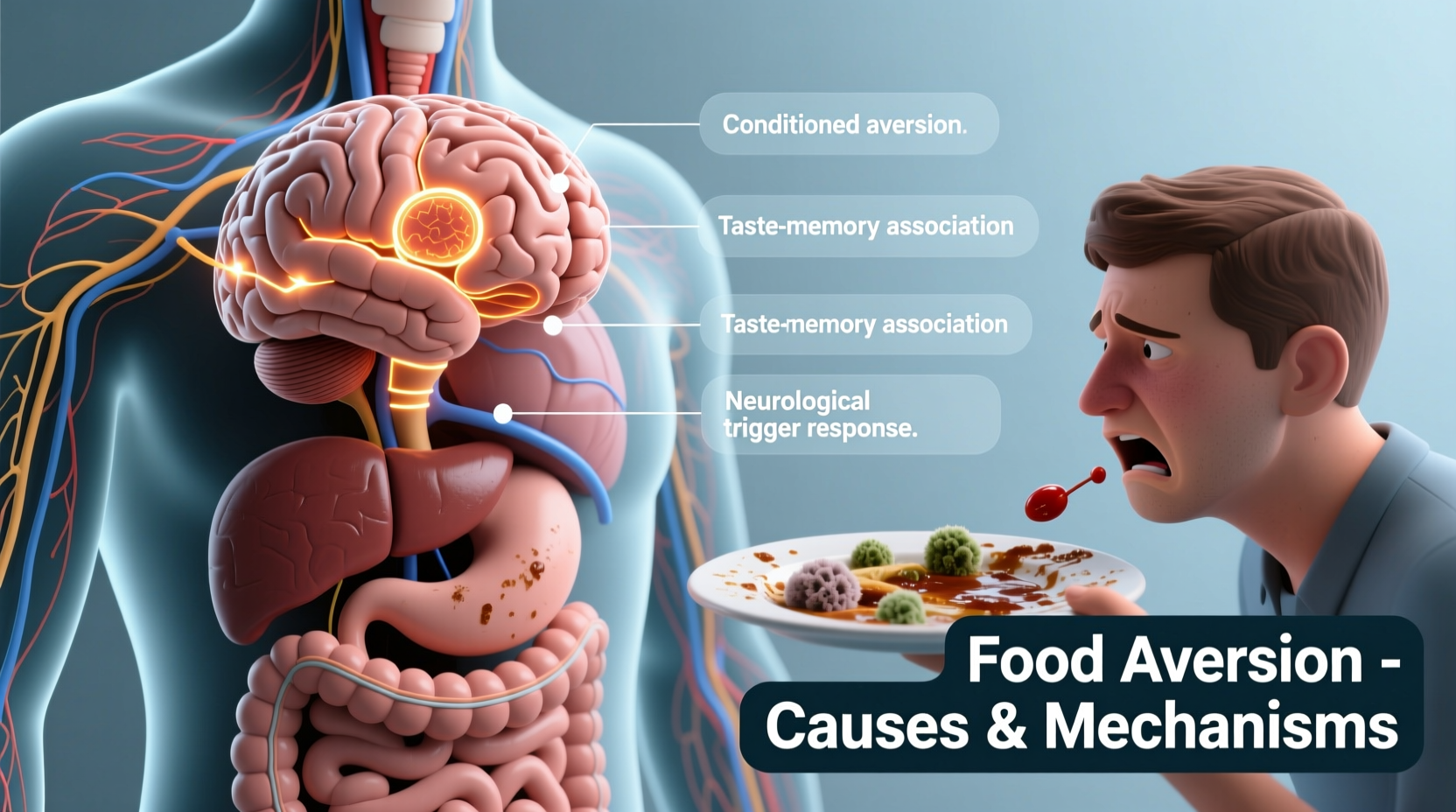Understanding food aversion begins with recognizing it's not simply about "being picky." This complex response involves neurological, psychological, and sometimes physiological factors that create genuine distress around certain foods. Whether you're experiencing this yourself or supporting someone who is, knowing the facts helps separate myth from reality and guides effective management strategies.
What Exactly Is Food Aversion? Beyond Picky Eating
Food aversion occurs when someone develops an intense, often irrational avoidance of specific foods or food groups. Unlike temporary dislikes that come and go, food aversion creates genuine emotional or physical discomfort at the thought, sight, or smell of the offending food. The reaction may include:
- Nausea or gagging reflexes when encountering the food
- Heightened anxiety or panic attacks
- Physical withdrawal behaviors (turning head, closing eyes)
- Strong emotional resistance to even trying small amounts
Crucially, food aversion differs from normal picky eating in intensity, persistence, and impact. While children might temporarily reject broccoli, someone with food aversion experiences significant distress that persists into adulthood and often extends to multiple food categories.
How Food Aversion Develops: Types and Triggers
Food aversion doesn't appear overnight—it typically follows specific pathways. Research from the National Institute of Mental Health identifies several common development patterns:
| Type of Food Aversion | Primary Trigger | Typical Duration | Common Foods Affected |
|---|---|---|---|
| Conditioned Aversion | Negative experience (food poisoning, illness) | Persistent (years+) | Specific food eaten before illness |
| Sensory-Based Aversion | Texture, smell, appearance sensitivity | Lifelong pattern | Meats, vegetables, mixed textures |
| Anxiety-Driven Aversion | Generalized anxiety or trauma | Ongoing without treatment | Multiple food groups |
This evolutionary timeline shows how food aversion typically progresses:
- Initial exposure to food with negative sensory properties or during illness
- Association formation between food and discomfort (nausea, anxiety)
- Avoidance behavior develops as protective mechanism
- Reinforcement cycle where avoidance reduces distress, strengthening the behavior
- Potential generalization to similar foods or eating situations
Food Aversion vs. Related Conditions: Clear Boundaries
Understanding context boundaries prevents misdiagnosis. Food aversion exists on a spectrum with important distinctions:
- Normal picky eating: Common in children (18-24 months), usually resolves by age 5, limited to 5-10 foods
- Food aversion: Persistent beyond childhood, causes genuine distress, may involve physiological responses
- ARFID (Avoidant/Restrictive Food Intake Disorder): Clinical diagnosis requiring significant weight loss, nutritional deficiency, or interference with daily functioning
According to diagnostic criteria from the American Psychiatric Association, food aversion crosses into clinical territory when it causes:
- Significant weight loss or failure to gain expected weight
- Nutritional deficiencies requiring supplementation
- Dependence on oral nutritional supplements
- Marked interference with social functioning
Practical Management Strategies That Work
Whether dealing with mild or severe food aversion, evidence-based approaches can help expand food acceptance. The key is gradual, non-pressured exposure:
Step-by-Step Desensitization Process
- Identify trigger characteristics (texture, color, smell) using a food diary
- Start with non-food exposure (looking at pictures, discussing the food)
- Progress to sensory exploration without eating (touching, smelling)
- Introduce tiny tasting amounts with no pressure to swallow
- Pair with positive experiences (favorite activities, social settings)
A 2023 study published in the Journal of Pediatric Gastroenterology and Nutrition found that this graduated approach improved food acceptance in 78% of participants after 12 weeks when consistently applied. The most successful outcomes occurred when individuals controlled the pace of exposure without external pressure.

When Professional Help Becomes Necessary
Consider seeking specialized support if food aversion causes:
- Weight loss exceeding 5% of body weight in 3 months
- Reliance on fewer than 10 different foods for nutrition
- Avoidance affecting social relationships or daily activities
- Physical symptoms like chronic fatigue from nutritional gaps
Cognitive Behavioral Therapy (CBT) and Exposure and Response Prevention (ERP) techniques administered by therapists specializing in eating disorders show the highest success rates. The National Eating Disorders Association maintains a verified directory of qualified professionals.
Living Successfully With Food Aversion
Many people successfully manage food aversion through strategic planning and mindset shifts. Key approaches include:
- Focusing on expanding acceptable foods rather than forcing disliked ones
- Using food substitutions that meet nutritional needs (e.g., smoothies for vegetable aversion)
- Creating positive mealtime environments free from pressure
- Working with a registered dietitian to ensure nutritional adequacy
Remember that complete "cure" isn't always the goal—functional management that supports health and quality of life represents meaningful progress. With patience and the right strategies, most people significantly improve their relationship with food over time.











 浙公网安备
33010002000092号
浙公网安备
33010002000092号 浙B2-20120091-4
浙B2-20120091-4